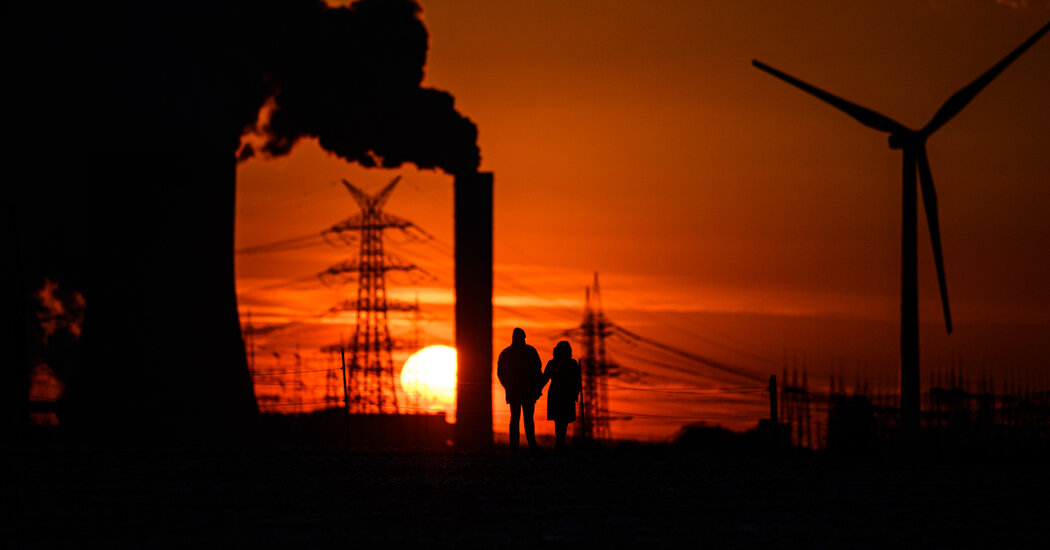
The unevenness in global action comes even as scientists warn that the damages from rising temperatures are already reverberating around the globe. A report by the Environmental Protection Agency published last week found that in the United States, wildfires are now starting earlier in the year, heat waves are more frequent and flooding is more common.
If the world’s governments want to change course quickly, the International Energy Agency has essentially offered a step-by-step guide for how they might do so. The agency sketched out one potential timetable:
This year, nations would stop approving new coal plants unless they are outfitted with carbon capture technology to trap and bury their emissions underground. Nations would also stop approving the development of new oil and gas fields beyond those already committed.
By 2025, governments worldwide would start banning the sale of new oil and gas furnaces to heat buildings, shifting instead to cleaner electric heat pumps.
By 2030, electric vehicles would make up 60 percent of new car sales globally, up from just 5 percent today. By 2035, automakers would stop selling new gasoline- or diesel-fueled passenger vehicles. By 2050, virtually all cars on the roads worldwide either run on batteries or hydrogen.
By 2035, the world’s advanced economies would zero out emissions from power plants, shifting away from emitting coal and gas plants to technologies like wind, solar, nuclear or carbon capture. By 2040, all of the world’s remaining coal-fired power plants are closed or retrofitted with carbon capture technology.
In 2035, more than half of new heavy trucks would be electric. By 2040, roughly half of all air travel worldwide would be fueled by cleaner alternatives to jet fuel, such as sustainable biofuels or hydrogen.
The American Petroleum Institute, an oil and gas industry trade group, said it agreed with the goal of a lower carbon future but still saw a role for oil and gas going forward. “Any pathway to net zero must include the continued use of natural gas and oil, which will remain crucial to displacing coal in developing nations and enabling renewable energy,” said Stephen Comstock, the institute’s vice president of corporate policy.
The International Energy Agency warned that an energy transformation on the scale necessary would require “unprecedented” global cooperation, with wealthier nations helping poorer countries that lack the technological expertise or investment capital to decarbonize.
It would also require a crash research program to improve clean energy technologies.
The world can make enormous strides in cutting emissions over the next decade by deploying technologies that are already widely used, such as wind turbines, solar panels and electric vehicles. But roughly half the emissions cuts by 2050 would come from technologies that are still in the demonstration or prototype stage, the report said, such as cleaner hydrogen fuels for steel plants, advanced batteries to juggle wind and solar output and devices to pull carbon dioxide out of the atmosphere.
Governments will have to pay careful attention to the geopolitical upheaval that could accompany a rapid shift to clean energy, the agency said. For instance, mining for critical metals such as cobalt or copper would grow sevenfold over the next decade. The sharp decline in oil and gas production worldwide would likely mean that low-cost oil producers in places like the Middle East would assume a dominant share of the remaining market.
Other challenges abound. While a push for clean energy could create some 30 million new jobs globally, another 5 million people in fossil-fuel industries could find themselves out of work. And, today, more than 785 million people worldwide currently have no access to electricity, and the agency warned that a shift away from fossil fuels shouldn’t leave them behind.
“This isn’t too far out of line with what other academic reports have said, but it’s important that this is the International Energy Agency saying this,” said David Victor, a climate expert at the University of California, San Diego, who reviewed the report before its publication. “Companies or governments might come in and say they disagree with the specifics of what needs to happen, but this report essentially serves as a starting point for those discussions.”
The agency concluded that limiting global warming to 1.5 degrees Celsius remains technically and economically feasible, but there is little margin for error or delay. “Making net-zero emissions a reality,” the report concluded, “hinges on a singular, unwavering focus from all governments — working together with one another, and with businesses, investors and citizens.”


Average Rating